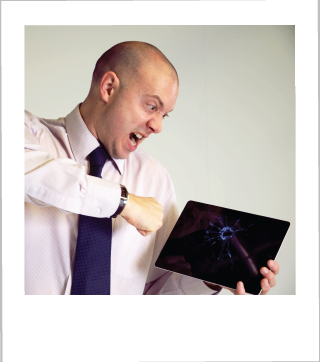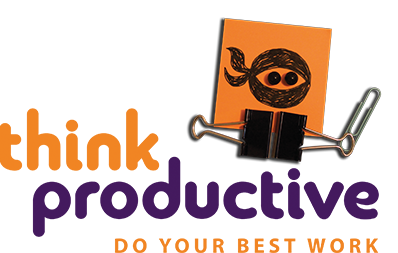Best and Worst Ways to End an Email
Knowing when and how to respond to emails can be a real challenge at times. On top of that, people can’t see your expression or hear your tone of voice, so you have to be especially careful with what you write. The last thing you want to do is wind up seeming unprofessional at work.
Email is a Skill
There is a real skill involved in learning how to write an email so it’s professional, yet warm and friendly. The way you end your email can have a big impact on the way your reader views the rest of the email, too. What most people really need is email etiquette training. Although learning all the ins and outs of writing emails that help you gain and retain customers would take hours, looking at a few worst and best practices for endings is a good place to start.

Overly Friendly
There’s a fine line between warm and overly friendly. While you want to seem approachable, you don’t want the customer to feel uncomfortable. Below is an example of the worst way to end an email, followed by a better option.
Worst: “Love and kisses! XOXO”
This ending is horrible unless you’re emailing your mother or your romantic partner. No one is going to see you as a professional if you close your emails this way. The Xs and Os are also a bit juvenile for business writing. Again, this ending is fine for a personal note to a friend or family member, but not OK for professional emails.
Better: “Warm regards,”
This ending works better because it’s polite, but still friendly. Unless you’re emailing your spouse or family member, this is probably the strongest feeling you need to express.
The Wrong Words
There is a science to getting a response from your business emails. Emails that ended with some variation of “Thank you” got a higher response rate than other popular closings, such as “Sincerely.” For example, the emails that ended with “Thanks in advance” got a 65.7 percent response rate, and overall, any form of “Thank you” in the closing had an average response rate of 36 percent higher than closings that did not express gratitude.
Worst: “Sincerely,”
While you may have been taught to end business emails with “sincerely” in college classes, this closing has been proven to be less effective than gratitude.
Better: “Thanks in advance for your response.”
Any form of gratitude has a better response. People like to be thanked for their contributions. It makes them feel important to you as a business.
Making Templates Too Formulaic
Figuring out how to respond, how to formulate your email and how to end it can take up your time and other precious resources that could be better used for other endeavors. Once you decide the best way to end your emails — or several options for different people in your life — it’s time to create some templates. With a template, you can pull up a ready-made ending and plug it into any email you send, making you far more productive and efficient.
Using email templates is a smart way to free up precious time in your schedule. If you find yourself writing the same email over and over, just save it as a template and tweak the phrasing based on the circumstances. Creating a template also gives you the ability to think through how best to word the email to convert leads into customers. However, you also have to be careful not to leave information from another client in the email, and to make sure the ending matches the overall tone of the letter.
Worst: “Jack, thanks for touching base today!”
This phrase is problematic because the customer’s name may not be Jack, and if you forget to replace that with the correct name, it will be obvious you’re using a form letter. Or, even worse, the customer may think you don’t remember their name.
Better: “Thanks for touching base today!”
Adding Your Own Life View
You’re running a business, not telling the world what your view is on life. With the rare exceptions of companies that are built on causes — such as nonprofits or political organizations — you really don’t need to insert your worldview into the ending of an email. This will likely turn people off, no matter how good the cause. A quote that inspires you may seem insulting to your recipient.
Worst: “If you agree dogs are better than cats, I want you as a customer.”
Obviously, that is an extreme example. But even adding in quotes from a specific figure can send a statement. It’s better to save the quotes for your personal emails and social media accounts, and leave them off your business emails.
Better: “I want you as a customer and will work to keep you happy.”
It’s hard to disagree with someone who wants to keep you happy. This email closing puts the focus back on your work and the business and keeps it out of personal waters.
Not Enough Information
A potential client emails you to ask for more information, and you send them a standard response that doesn’t answer any of their questions. This is quite frustrating to customers who are trying to make a more informed decision. They may just run to your competitor instead.
Worst: “Check out my site for more info.”
The customer has probably already visited your site and couldn’t find the answer they were looking for. If they wanted to read some more content, they wouldn’t have bothered to email you in the first place.
Better: “If you have any other questions, don’t hesitate to reach out anytime.”
Acronyms and Slang
When we’re chatting over text messages with family and friends, we tend to abbreviate with acronyms such as TTYL, or “talk to you later,” and TY, short for “thank you.” However, it’s best to stay away from these abbreviations when it comes to professional emails. First, the person may not be certain what you mean. Second, it’s not as professional as just writing a simple “best,” which ranks high in favorite sign-offs.
Worst: “TTFN”
TTFN is an acronym for “ta-ta for now.” If you wouldn’t say “ta-ta for now” to a client in a conversation, why would you ever use the acronym in an email? Just no.
Better: “All my best,”
Ending an email can be a challenge at times, particularly with a frustrating person. However, you’ll find the effort in figuring out some standard closings will go a long way toward retaining the customers you have as well as gaining new ones.
By Lexie Lu
Lexie Lu is a freelance designer and blogger. She enjoys researching the latest trends and always has a cup of coffee in close proximity. She manages Design Roast and can be followed on Twitter @lexieludesigner.
Before you Go…
Do you constantly get “cc’d” into emails at work?
Can’t even open your emails without already
feeling stressed?

Our Email Etiquette Training and
Getting Your Inbox to Zero Workshop
might be exactly what you and your team need.
Want to know more?
Email our team here.
